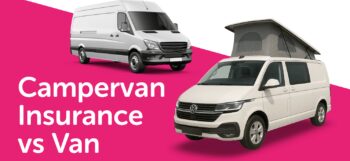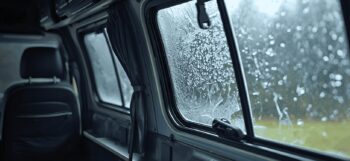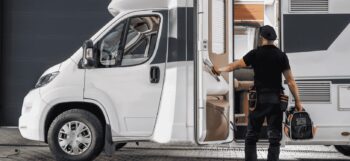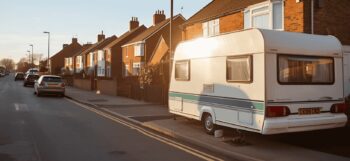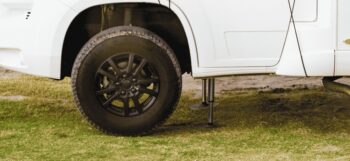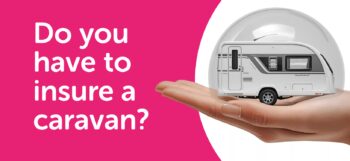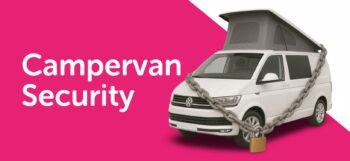So, you’ve bought a caravan and can’t wait to start exploring. Before you hit the road, it’s crucial to get up to speed with towing regulations and best practices. Here’s a step-by-step guide to help you prepare.
Does your driving licence cover towing a caravan?
The type of driving licence you hold determines what you can legally tow. Fortunately, rule changes made in December 2021 have simplified things for many drivers.
- If you hold a category B licence, you can tow trailers or caravans with a combined weight of up to 8,250kg without taking a B+E test. This applies regardless of when you passed your test.
- Caravans under 750kg MAM (Maximum Authorised Mass) are automatically covered by a category B licence.
While the rules are straightforward, towing practice is crucial for safety. If you’re new to towing, consider taking a towing course to build confidence.
What’s the maximum weight your car can tow?
Once you know your licence limits, you’ll need to check your car’s towing capacity. This is the maximum weight your vehicle can tow safely and legally.
To work out the towing capacity of your vehicle, you need to know its kerb weight and the maximum weight of your caravan. This is the weight of your car when empty but with fluids and a full tank of fuel. You can find it in your car’s manual or on the V5 registration document. The weight of the caravan is usually listed on a data plate near the door frame, or the manufacturer’s specifications.
Tips for safe towing
For safe towing, aim to keep your caravan's loaded weight at 85% or less of your car’s kerb weight. If it’s between 85% and 100%, extra caution will be needed when driving as handling may be more difficult. Never exceed the car’s towing capacity or the caravan’s own MAM.
Don’t forget to check the gross train weight (GTW). This is the maximum weight of your car and caravan combined. This is likely to be listed on the vehicle’s manufacturer plate, typically found in the driver’s door frame, under the bonnet, or in the engine compartment. This plate includes two figures:
- Gross Vehicle Weight (GVW): Maximum weight your vehicle can weigh, including passengers and cargo.
- Gross Train Weight (GTW): Maximum combined weight of the vehicle, its cargo, and any towed load (e.g., caravan or trailer).
The GTW should never be exceeded, as it ensures the vehicle and trailer's safety and legal compliance. Overloading can cause braking issues, instability, and invalidation of insurance. You can read more about these limits on the official UK government page: Towing weight and width limits
Is your vehicle and caravan under the maximum width and length?
The legal size limits for towing a caravan in the UK are as follows:
- Width: Up to 2.55 metres.
- Length: Up to 7 metres (excluding the tow bar).
These regulations ensure safe towing practices and are part of UK towing laws. You can confirm these limits and find more details on towing on the UK Government’s official website.
Is your vehicle ready to tow a caravan?
Before you set off, you need to make sure your vehicle is ready to tow a caravan. This includes making sure your:
- Tow bar meets EU regulations and is designed for your vehicle. If your car was first used after 1st August 1998, the tow bar must comply with EC 94/20 regulations. Older vehicles should still use an appropriate tow bar for safety.
- Tyres are in good condition and inflated to the correct pressure for towing.
- Number plate is visible, matches your towing vehicle, conform to British standards, and can be illuminated at night.
- Rear lights and indicators are fully operational
- You have extended towing mirrors to improve visibility.
Is your caravan ready for the road?
You also need to make sure your caravan is ready for the road. If your caravan’s MAM exceeds 750kg (including the contents), your caravan must have a fully functioning brake system. Ensure your load is evenly distributed and heavy items are stored low, near the axle to maintain stability while towing.

This guide from the Driver and Vehicle Standards Agency breaks down essential safety checks you should carry out before towing your caravan: Tow a trailer or caravan with a car: safety checks - GOV.UK
Are you ready to tow?
Towing can feel daunting at first, but a bit practice and preparation can soon help to build your confidence. Before you hit the road for the first time, keep these tips in mind:
Allow extra time and space for manoeuvres
When towing, your vehicle's handling, turning circle, and braking distances are significantly impacted. It's crucial to allow extra time and space for all manoeuvres, including overtaking, turning, or merging into traffic. This is especially important when making sharp turns or reversing, as your caravan will follow a different trajectory than your car.
Turning Circle: Towing a caravan greatly increases your vehicle's turning radius. This means you will need more space to make turns, particularly when navigating narrow roads, tight corners, or parking spaces. Be mindful of curbs, obstacles, or other vehicles that could be in your path.
Gradual Braking: When braking, always apply gradual pressure to avoid destabilizing the caravan. Bringing your vehicle to a sudden stop can cause the caravan to sway or jackknife, especially if you haven’t allowed enough space. This is especially important when towing on slopes or when approaching traffic lights or stops.
By planning ahead and anticipating these challenges, you can maintain better control of both your vehicle and caravan, ensuring a safer journey. Consider using a Sat Nav designed for Caravan owners and plotting your route beforehand. Systems such as the Garmin Camper 770 LMT-D are designed specifically for larger vehicles, allowing you to input your caravan's size and weight to get customised routes, including those that avoid low bridges and sharp turns.
Stick to speed limits for towing
The legal speed limits for towing in the UK are:
- 50mph on single carriageways
- 60mph on dual carriageways and motorways
Even if conditions seem clear, sticking to these limits reduces the risk of instability caused by crosswinds or passing vehicles. Always check weather conditions; strong winds or rain can affect stability. Reduce your speed further if needed. Read our article on towing in windy conditions for more tips on towing safely in adverse conditions.
Avoid the right-hand lane on motorways with three or more lanes
It’s illegal for vehicles towing caravans to use the right-hand lane on motorways with three or more lanes, except in situations where lanes are closed. Staying in the left or middle lanes improves road safety and ensures you're not blocking faster-moving traffic. Always check your mirrors frequently and maintain consistent speeds to allow others to overtake safely.
Practice reversing and parking before your trip
Reversing with a in tow caravan requires practice as the caravan will move in the opposite direction to the steering wheel turn. To improve your confidence, find an open, safe area such as an empty car park or caravan site to practice manoeuvres. Use markers to simulate obstacles or parking spaces.
Familiarise yourself with the pivot point of your caravan, as understanding this will make reversing into tight spots more manageable. Consider using a spotter or rear-view cameras to assist with accuracy and to prevent accidents.
Additional tips for towing
Plan Breaks: Long-distance towing requires regular stops to check the caravan’s tyres, coupling, and lights.
Monitor Load Distribution: Uneven loads can cause instability. Ensure heavy items are stored low and close to the axle.
Anticipate Weather Challenges: Wet or icy roads demand slower speeds and more cautious cornering.
Protect your caravan adventures
Ensuring you have insurance and breakdown cover for your vehicle can prove essential for safeguarding against unforeseen challenges on the road.
Touring Caravan Insurance offers financial protection in the event of accidents, theft, or damage, helping to ensure that you won't face significant out-of-pocket costs. It can also offer peace of mind, knowing you're covered in unexpected situations. Caravan breakdown cover further enhances your security by offering assistance in case of mechanical failures or other problems during your journey. Whether it’s a flat tyre or an electrical fault, breakdown cover means that help is just a call away, with towing provided if needed. Together, insurance and breakdown cover form a safety net, allowing you to travel with confidence and help you get back on track quickly should the unexpected occur.
Find out more about our Touring Caravan insurance and RAC Touring Caravan breakdown cover*, and protect your adventures today!
Happy Caravanning!
Policy limits and exclusions may apply, please see the policy wording for full terms and conditions.
*RAC touring caravan cover is not a standalone product and can only be purchased in conjunction with touring caravan insurance.
Disclaimer: The sole purpose of this article is to provide guidance on the issues covered. This article is not intended to give legal advice, and, accordingly, it should not be relied upon. It should not be regarded as a comprehensive statement of the law and/or market practice in this area. We make no claims as to the completeness or accuracy of the information contained herein or in the links which were live at the date of publication. You should not act upon (or should refrain from acting upon) information in this publication without first seeking specific legal and/or specialist advice. Arthur J. Gallagher Insurance Brokers Limited trading as Lifesure accepts no liability for any inaccuracy, omission or mistake in this publication, nor will we be responsible for any loss which may be suffered as a result of any person relying on the information contained herein.
FP08-2025


